Cardiothoracic Instrumentation
By: Lindsey Joyce, MSN, RN, CNL, CNOR
Published: 9/26/2023
Instruments Used During Cardiothoracic Surgery
This article will discuss various instruments used during cardiothoracic surgery, including retractors, needle holders, pickups, and other cardiac-specific instruments. Procedures that may use these instruments include coronary artery bypass grafting (CABG), valve and aorta surgeries, and other surgeries where access to the heart is needed.
Rultract Retractor
The Rultract retractor is used to provide exposure to the internal mammary arteries. There are four parts: a bottom post with a clamp that will attach to the OR table, a spline that will allow height for the retractor, a rachet with a cable that can be moved on the spline for exposure needs, and rakes to elevate the sternum. After the sternum is sawed open, the rakes will be attached to the sternum and then elevated, allowing the internal mammary artery to come into view.
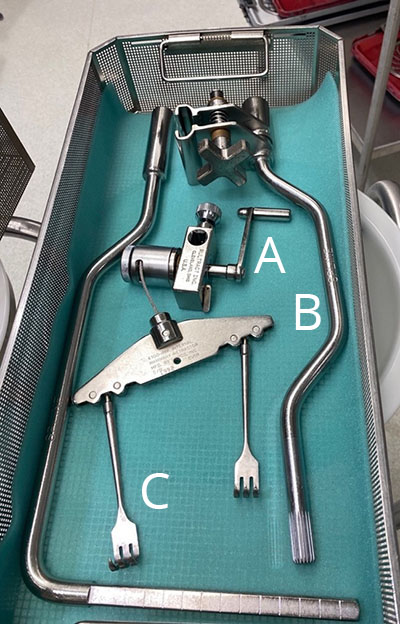
Figure 1. Rultract retractor. A: Rachet/cable. B: Bottom post. C: Rakes.
Sternal Retractor
A sternal retractor is used to keep the sternum separated and allow exposure of and access to the heart and aorta during surgery. It remains in for the duration of the procedure. The right retractor is fixated to a spine with openings for the left chest retractor to attach to. The left chest retractor can be moved up and down the spine to allow for optimal exposure.
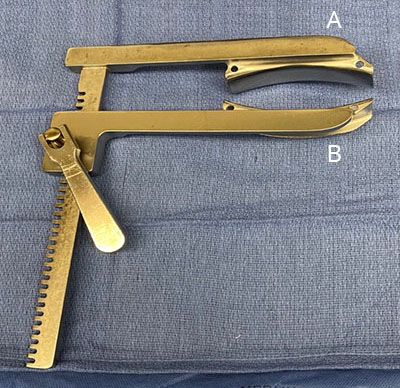
Figure 2. Sternal retractor. A: Patient's right chest. B: Patient's left chest.
Wire Instruments
Wire instruments are used at the end of procedures.
- Wire needle holders are heavy and thick. They are used to load wires (like suture is loaded) and to put wires through the sternum to close after surgery is completed. They also can be used to twist the wire in after it has been cut.
- Wire cutters are used to cut the wire to the desired length to close the sternum.
- Wire twisters are used to bring the wires on either side of the sternum together.
- Wire removers are used to cut out wires placed in a previous cardiac surgery.
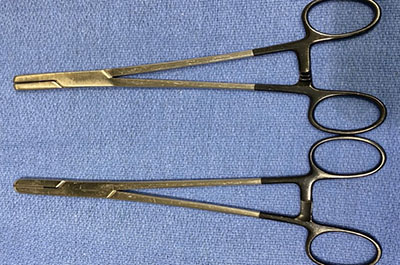
Figure 3. Wire needle holders.
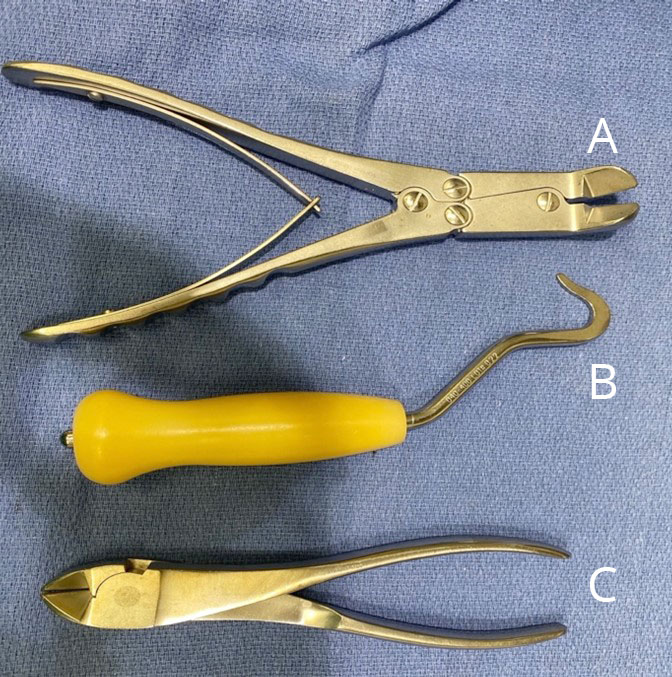
Figure 4. A: Wire cutter. B: Wire twister. C: Wire remover.
Sternal Saw
The sternal saw is used to open the sternum for cardiac surgery. It is battery operated. The blade can either be loaded up or down, depending on surgeon preference. There is a guard to go over the blade that can be turned whichever way the blade is loaded.
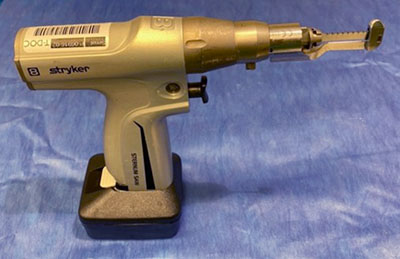
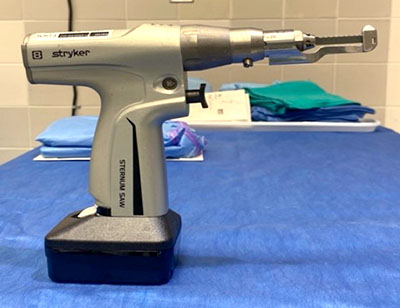
Figure 5. Sternal saws.
Coronary Instruments
Coronary instruments include scissors, needle holders, pickups, and dilators. They are delicate instruments used to handle microneedles and manipulate the veins and arteries used for making the conduits for bypasses. Veins and arteries for bypasses must be handled with care so they are not torn.
- Coronary scissors are delicate instruments used to cut veins and arteries during cardiac surgery. Surgeons will cut the vein or artery conduit in a way that will fit best for the bypass. The different tips of the scissors can help shape the conduit to the desired shape and length for use.
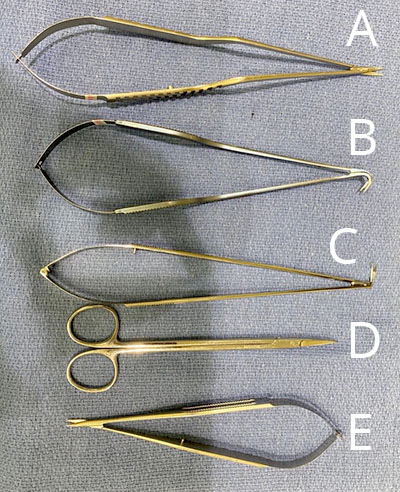
Figure 6. A: Long micro scissors. B: Reverse angle scissors. C. Right angle scissors. D: Straight vessel scissors. E: Short micro scissors.
- Coronary needle holders (sometimes called Castro needle holders) are used in cardiac surgery to load micro needles, usually a 5-0 and smaller. They have a smaller tip to accommodate a smaller needle.
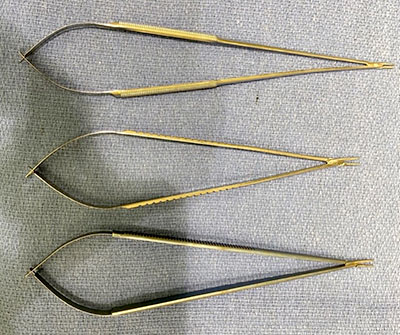
Figure 7. Nonlocking needle holders.

Figure 8. Locking needle holders.
- Coronary pickups are used to manipulate the vein and artery conduit grafts into position for bypass. They also are used to hold the conduit while the surgeon sews the graft into place.

Figure 9. Scanlan pickups.
- Coronary dilators are used to measure the internal diameter of the vein or artery conduit. Dilators are sized 1.0 mm and 1.5 mm. They can be placed directly into the conduit graft.

Figure 10. Coronary dilators.
Rumel Tourniquet Passer
A Rumel is used to tighten purse string sutures to control bleeding at cannulation sites. A short red rubber catheter is placed over the instrument to help pass an umbilical tape around a vessel.

Figure 11. Rumel tourniquet passer.
Bulldog Appliers
Bulldogs are used to temporarily occlude a vessel. They are applied but will eventually be removed before the end of surgery. Bulldogs are also used to identify directionality of the vessel: distal or proximal.
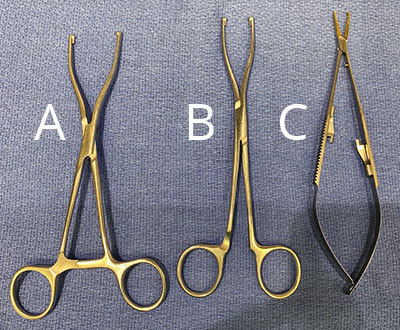
Figure 12. A: Bulldog applier. B: Bulldog remover. C: Neuro bulldog applier/remover.

Figure 12. Neuro bulldog applied in the clip applier.
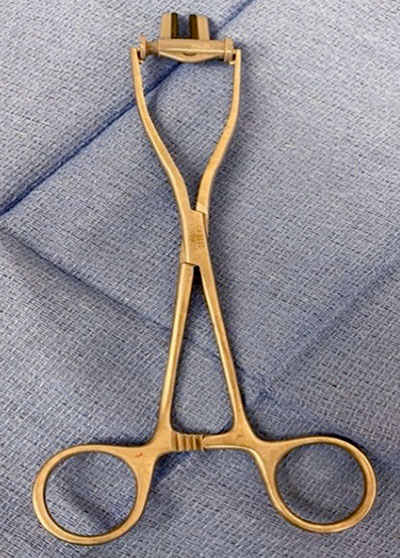
Figure 13. Regular-sized bulldog in the applier.
Tubing Clamp
Tubing clamps are used to tighten the lumen of plastic tubes from the heart-lung machine that are connected to the patient. They are used to control the rate of blood flow to and from the body.
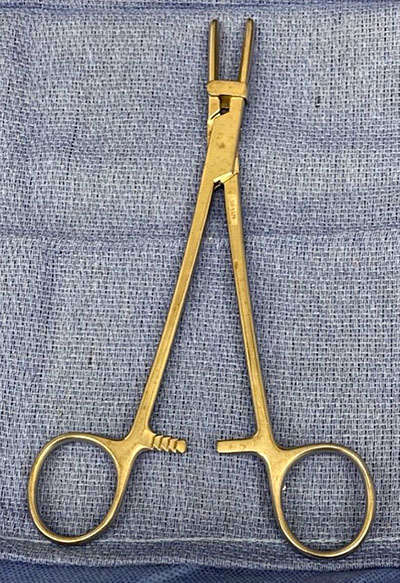
Figure 14. Tubing clamp.
Cardiovascular Clamps
There are various cardiovascular clamps used in cardiac surgery. Their purpose is to either minimize blood flow or stop it completely, so the artery can be worked on.
- The Derra partial occlusion clamp has two sizes; the one used depends on the vessel being operated on. This clamp allows for some blood flow through the artery while it is being worked on.
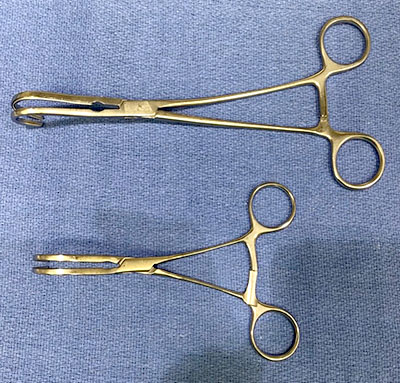
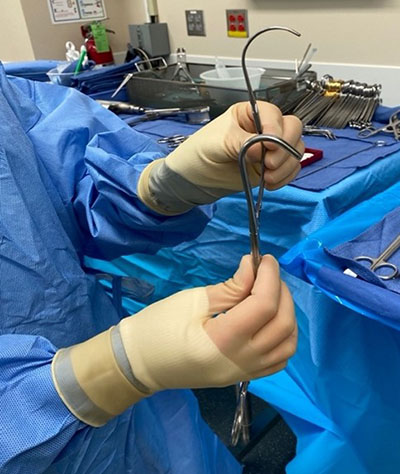
Figure 15. Derra partial occlusion clamps.
- Another type of cardiovascular clamp is the DeBakey clamp. It has a more profound angle to get around deeper vessels like the aorta. However, when this clamp is applied, complete blood flow to the artery is stopped, so there will be no blood flow going through while the artery is being operated on.
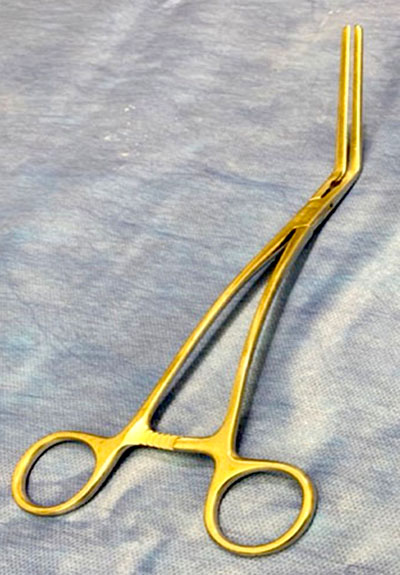

Figure 16. DeBakey clamps.
- The aortic cross clamp is a crucial clamp used in all cardiac surgery. It is a larger, more angled version of a DeBakey clamp. It is used to clamp the aorta to stop blood flow during surgery. Soft inserts are used on this clamp to make it atraumatic, so it will not damage the aorta.
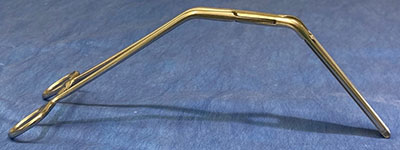
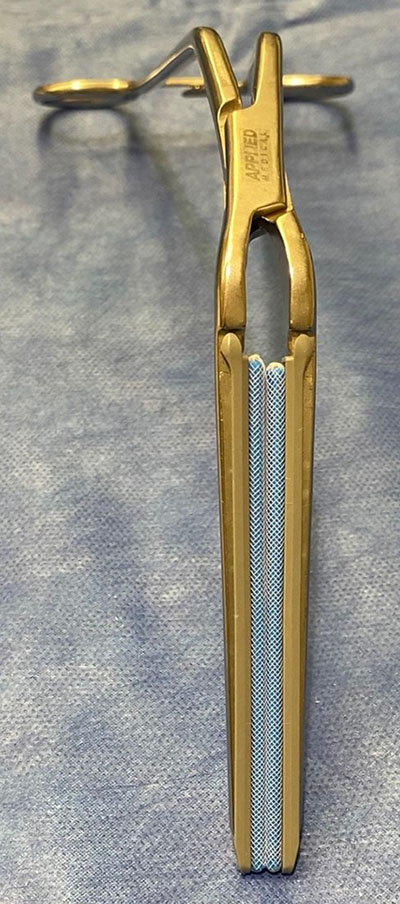
Figure 17. Aortic cross clamp.
Internal Cardiac Paddles
Sometimes, it is necessary to shock the heart during surgery. Internal paddles are designed to do that. Paddles are kept sterile on the field while a long cord is handed off to anesthesia to plug into a defibrillator. Because the paddles are applied directly to the heart, a low energy dose is used (typically 10 joules).
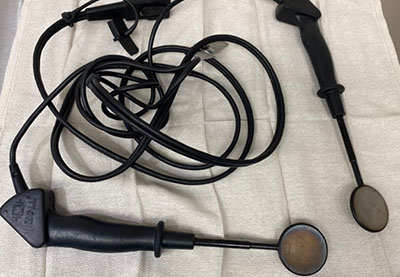
Figure 16. Internal cardiac paddles.
Editor's notes: AORN does not endorse any commercial company’s products or services. Inclusion or exclusion of products in this article does not constitute an endorsement or review (implied or otherwise) by AORN of the quality or value of such products, or of the claims made by its manufacturer. Images are courtesy of Lindsey Joyce.

